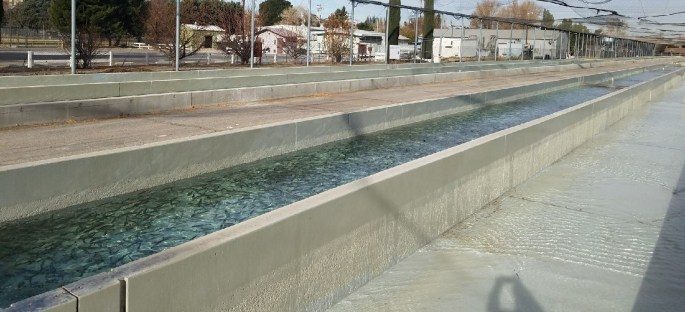L. garvieae bacteria has never been detected in trout in California.
A bacterial outbreak at a state run trout hatchery on the West Coast of the USA has killed up to 60,000 fish.
In a press release from the California Department of Fish and Wildlife (CDFW), trout facilities Mojave River Hatchery and Black Rock and Fish Springs hatchery in the eastern Sierra and Southern California, have been battling Lactococcus garvieae, which is similar to streptococcus.
Early evaluations at Black Rock and Fish Springs, both major producers and suppliers of trout for Southern California, suggests that most of the fish in both facilities may be infected.
Potentially infected are 700,000 rainbow trout at Black Rock and 1.5 million rainbow, cutthroat, brown and Eagle Lake trout at Fish Springs. “CDFW staff hope that early treatment will prevent an a significant outbreak of the bacteria,” reported The Sheet.
CDFW said that it is taking a cautious and careful approach. “The L. garvieae bacteria has never before been detected in fish in California,” the department wrote.
Infected fish can show symptoms including bulging eyes, lethargic or erratic swimming and increased mortality, or be asymptomatic and show no signs of infection depending on a several factors including water temperature and stress. Fish-to-human transmission of this bacteria is rare and unlikely.
CDFW is currently investigating the source of the outbreak.
“This is a challenge for our hatcheries because the bacteria is previously unknown in California, and we don’t have tried-and-true strategies on hand to combat it,” said Jay Rowan, environmental program manager for CDFW’s Hatchery Production and Fish Health Laboratory.


